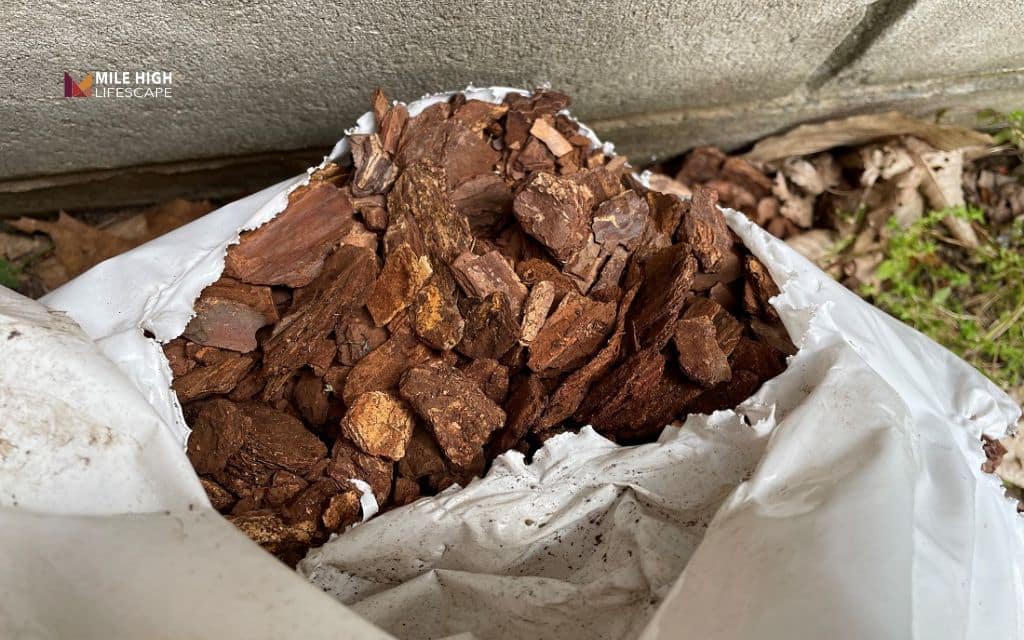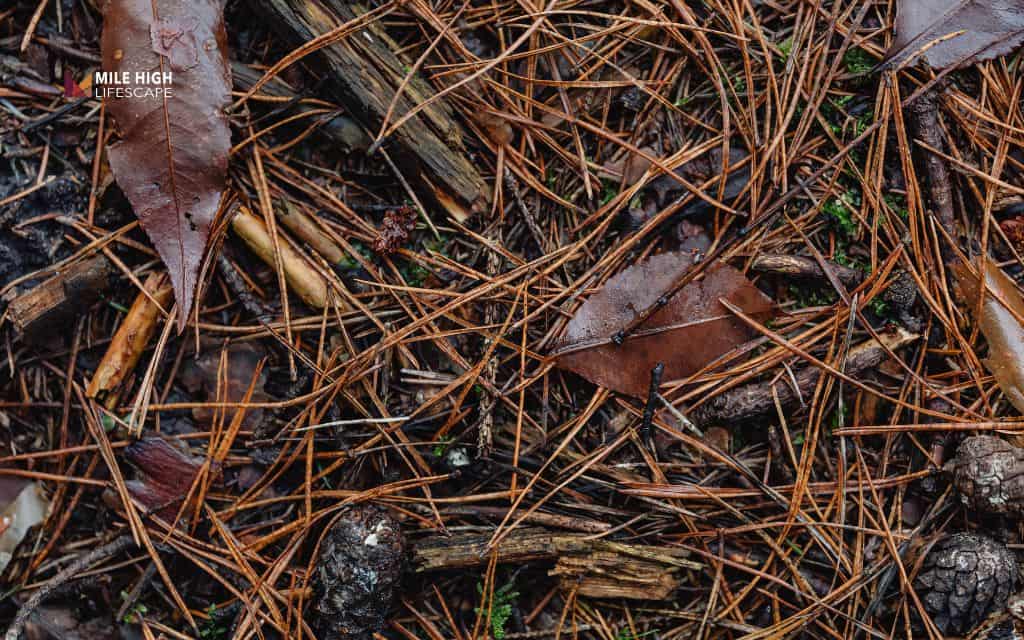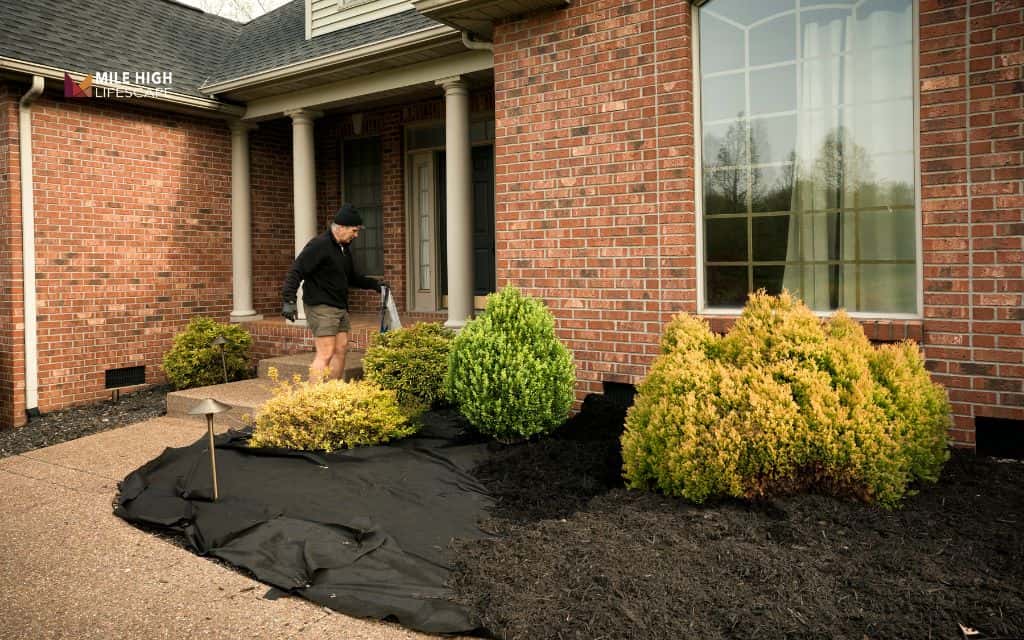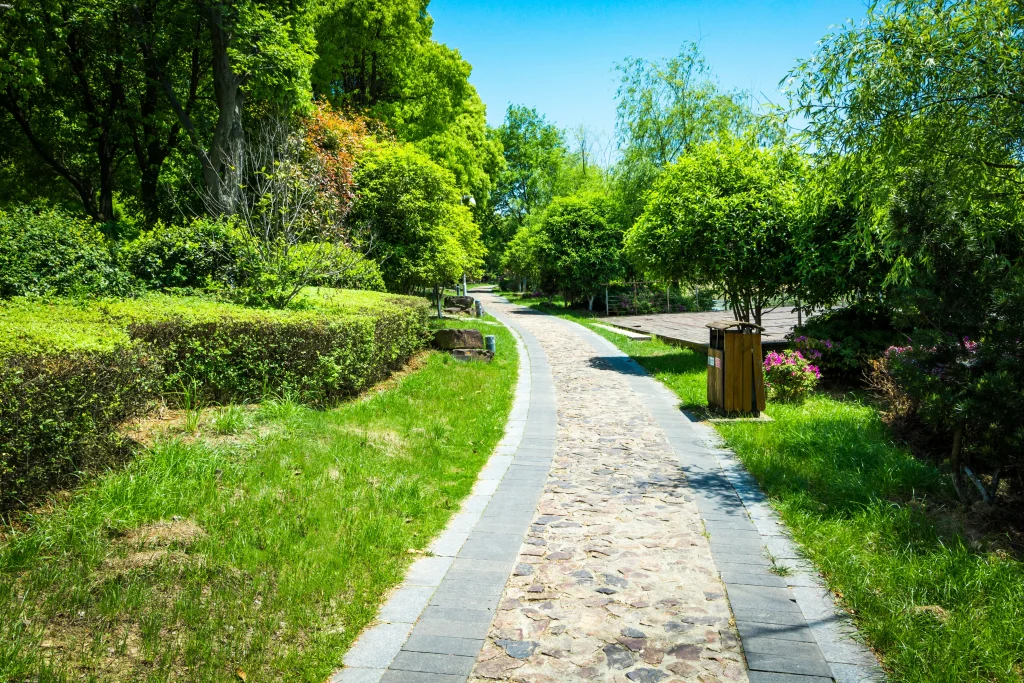Does mulch attract termites? Some people see that. But you have to know this: Mulch doesn’t magically attract termites from miles away. These insects don’t sense wood chips from across town and march toward your property.
The only way that mulch can attract termites is that mulch can create conditions that termites like – moist, shaded, wood-rich soil – if they’re already living in your area. Think of mulch not as a termite magnet, but as a welcome mat for termites that happen to pass through.
But, you don’t have to abandon mulch in Denver. The region’s semi-arid climate actually works in your favor: lower humidity means lower termite pressure than in coastal or southern states.
You just need to understand termite-safe practices: proper depth, correct placement, moisture management, and choosing materials that don’t feed these pests. Let’s find out in this article!
Does Mulch Attract Termites? Myth debunk
Let’s clear up the most common misconceptions that send Denver homeowners into a panic every spring.
Myth #1: “Mulch attracts termites to your house”
Fact: Termites live naturally in soil throughout Colorado. They’re already out there, moving through underground tunnels in search of food. Mulch doesn’t emit some irresistible scent that lures termites in from blocks away.
What mulch actually does: It can make life easier for termites that are already nearby. A thick layer of organic mulch provides moisture retention and protective cover, creating a microenvironment where termites can travel more safely.
Myth #2: “Mulch is full of termites when you buy it”
Fact: Bagged and bulk mulch rarely contains live termite colonies when purchased. Processing kills most insects with grinding, heating, drying, and months of storage create harsh conditions. Shipping and handling expose material to temperature extremes that termites can’t survive.
If you spot a stray termite in your mulch pile, it likely came from local soil, not the product itself.
One worker termite doesn’t equal an infestation. Colonies need queens, workers, soldiers, and specific environmental conditions to establish. A random insect crawling through fresh mulch is investigating, not colonizing.

Myth #3: “Any wood chips near the house = termite infestation”
Fact: Termites are selective about their food sources. They strongly prefer undisturbed, moist wood in direct contact with soil like buried lumber, old tree stumps, or structural wood that stays wet from poor drainage.
Loose, dry wood chips that get turned occasionally and exposed to intense sun and low humidity are much less appealing.
This doesn’t mean you should pile wood mulch against your siding, but it does mean you can use wood-based mulch in your landscape beds without guaranteeing an infestation.
How mulch can encourage termites
While mulch doesn’t attract termites from a distance, it can create conditions that encourage termite activity. Understanding these factors helps you make smarter choices.
Moisture retention
Mulch serves a critical function in Denver gardens: it helps soil retain precious moisture in our semi-arid climate. A 2-3 inch layer can reduce evaporation, which is exactly what your plants need.
Unfortunately, this same moisture retention also appeals to subterranean termites, which need consistent humidity to survive.
In Colorado’s dry environment, termites cluster in areas where moisture is more reliable. When mulch keeps soil damp near your home’s foundation, it can create one of those moisture-rich zones that termites actively search for during their foraging.
Shelter and cover
Subterranean termites build mud tubes to travel above ground because they need protection from light, air, and predators.
Thick mulch layers create a pre-made shelter system. A 4-6 inch blanket of wood chips provides darkness and stable temperatures, allowing termites to move between soil and any wood touching the ground without building exposed tubes.
This doesn’t mean the termites are “living” in your mulch like it’s their home. They’re still nesting underground. But the mulch makes it easier for them to explore your property undetected.
Direct wood-to-soil contact near the house
This is where improper mulch installation becomes a genuine problem. When you pile mulch directly against wood siding, fence posts, deck supports, or wooden steps, you’re creating the exact conditions termites evolved to exploit: wood in contact with moist soil, hidden from view.
The mulch hides their activity, keeps the wood damp (which softens it for easier eating), and provides continuous cover from your foundation to their food source.

Which mulches are more (or less) attractive to termites?
Not all mulches are created equal in termite-resistant qualities. Your choice of material makes a real difference.
Mulch types termites are more likely to use
Softwood mulches rank highest on the termite preference list. Pine chips, generic “wood mulch,” and shredded bark with high cellulose content offer both food value and comfortable shelter.
These materials break down relatively quickly in Denver’s climate, becoming softer and more digestible for termites over time.
Hardwood mulches are somewhat less appealing than softwoods, but termites will still use them if they’re the most convenient option nearby.
Termite-resistant mulches
Research from entomology departments and pest control professionals has identified several wood types that termites avoid or that even show toxic effects on termite colonies:
- Cedar contains natural oils (thujaplicins) that repel many insects, including termites. The heartwood offers stronger protection than sapwood.
- Cypress heartwood produces cypressene, a chemical compound that termites find unpalatable. Note that “cypress mulch” often contains significant sapwood, which lacks these protective qualities. Look for products specifically labeled “cypress heartwood.”
- Melaleuca (also marketed as tea tree mulch) contains terpenoids that deter termite feeding and can be directly toxic to them.
- California redwood heartwood shares cedar’s natural preservative qualities, though it’s less commonly available in Colorado.
- Eucalyptus-based mulches from certain species show termite-deterrent properties, though effectiveness varies by species.
- Inorganic options provide the most reliable protection: decorative rock, pea gravel, and rubber mulch offer zero food value to termites. They still retain some moisture and provide cover, but termites can’t eat them.
How to use mulch safely around your home
Proper installation matters more than mulch type. Follow these practices to minimize risk while enjoying mulch’s benefits.
Keep a clear inspection zone
Maintain a 6-12 inch mulch-free strip directly next to your foundation, siding, and concrete slabs. This bare zone serves as your early warning system. You can easily spot termite mud tubes climbing up the foundation or notice moisture problems before they become serious.
If you dislike the look of bare soil, fill this narrow band with decorative rock or pea gravel. These materials allow visual inspection while providing a finished appearance. The key is maintaining visibility of the foundation-to-soil junction where termites typically enter homes.
Control mulch depth
The ideal depth for organic mulch in Denver landscapes is 2-3 inches. This thickness provides adequate moisture retention, weed suppression, and temperature moderation for plant roots without creating excessive dampness.
Depths of 5-6 inches or more create problems: the bottom layers stay constantly wet, exclude oxygen, and begin anaerobic decomposition. This soggy environment increases pest risk, promotes root rot, and creates the humid conditions termites seek.
Keep mulch off wood
Never pile mulch up against:
- Wood siding
- Fence posts and rails
- Deck supports and joists
- Wooden steps, stairs, or trim
- Door frames or window sills
Aim to maintain 4-6 inches of visible foundation or non-wood material above the soil/mulch level. This clearance allows air circulation, prevents wood rot from constant moisture, and eliminates direct termite access points.
If your landscaping design calls for plants right up against the house, consider using rock mulch in those specific locations while using organic mulch elsewhere in the yard.
Manage irrigation
Colorado’s irrigation needs are unique compared to humid regions, but overwatering remains a common problem. Avoid creating constantly damp mulch zones through:
- Sprinkler overspray hitting foundation walls
- Poorly positioned drip lines that concentrate water
- Daily shallow watering instead of deep, infrequent cycles
Most established landscape plants thrive with deep watering 1-2 times per week rather than daily sprinkling. This schedule allows mulch to dry between waterings, making it far less hospitable to termites.

Best mulch choices for termite-aware gardeners
Organic mulches
- Cedar chip mulch remains the top organic choice for termite-conscious homeowners. It breaks down slowly, smells pleasant, and its natural oils deter termites. Expect to pay $35-50 per cubic yard, somewhat higher than generic wood mulch.
- Cypress heartwood mulch offers similar benefits if you can verify it’s true heartwood. Ask suppliers for documentation, as many “cypress” products contain mostly sapwood.
- Melaleuca mulch provides excellent termite resistance but can be harder to source in Colorado. Check specialty landscape supply stores.
- Certain hardwood mulches like oak or hickory show moderate termite resistance, though not as effective as cedar.
Remember: even these resistant mulches require correct installation. A 6-inch pile of cedar against your siding still creates problems.
Inorganic & non-wood options
- Rock or gravel mulch near foundations offers the strongest protection. Use ¾-inch river rock, decorative lava rock, or pea gravel in a 12-18 inch band around your home’s perimeter. These materials provide cover and some moisture retention but zero food value to termites.
- Rubber mulch made from recycled tires offers no food value and lasts for years without breaking down. However, it still retains moisture, and raises environmental concerns for some homeowners.
Conclusion
Mulch doesn’t automatically attract termites like a beacon. It simply creates favorable conditions that termites might utilize if they’re already present in your area. Since termites exist naturally in Colorado soils, your goal is to use mulch in ways that don’t hide problems or provide easy access to your home’s structure.
Walk around your home’s perimeter and check your current mulch installation. Look for mulch piled against siding, excessive depth, or areas that stay constantly wet. Make adjustments now – pull mulch back from the foundation, reduce overly thick layers, and address irrigation issues.
If you notice suspicious activity, contact a licensed termite professional immediately. Addressing problems early prevents thousands in repair costs.
_______________
However, the most important thing is to apply the mulch correctly and safely to prevent termites from developing in the mulch layer. It’s best to hire professional mulch installation services.
Contact Mile High Lifescape at (303) 877-9091 or hello@milehighlifescape.com for professional mulch installation that follows termite-safe practices. Our team understands Denver’s climate challenges and uses techniques that enhance your landscape.
Frequently asked questions (FAQs)
Will mulch bring termites to my yard in Denver?
No, mulch doesn’t actively attract or transport termites to your property. Termites are already present in Colorado soils and spread through underground foraging. Mulch may make your yard more favorable if termites arrive, but it doesn’t cause them to seek out your address.
Can mulch cause termites to invade my house?
Mulch alone won’t cause a termite invasion, but improperly applied mulch can make invasion easier. When mulch is piled against wood siding or maintains constant moisture against your foundation, it provides termites with hidden access and favorable conditions. Keep a 6-12 inch gap between mulch and structures.
Do wood chips attract termites more than bark or rock?
Wood chips, bark mulch, and other organic materials don’t actively “attract” termites, but they do provide potential food and shelter. Rock mulch offers no food value, making it the safest choice near foundations, though termites can still travel underneath. Cedar and cypress chips show natural termite resistance while providing organic benefits.
Is there termite-proof mulch?
No mulch is completely termite-proof. However, termite-resistant options include cedar heartwood, cypress heartwood, melaleuca, and inorganic materials like rock or rubber. Even resistant mulches need proper installation – maintain clearance from structures, control depth at 2-3 inches, and ensure mulch can dry between waterings.
Does cedar or cypress mulch attract or repel termites?
Cedar and cypress mulch actively repel termites rather than attract them. Both contain natural oils and compounds (thujaplicins in cedar, cypressene in cypress) that termites find unpalatable or toxic. Choose heartwood products for maximum protection, as sapwood lacks these defensive chemicals.
How far from my foundation should mulch be in Colorado?
Maintain a minimum 6-12 inch mulch-free zone next to your foundation in Colorado. This clearance allows you to inspect for termite tubes, ensures proper drainage, and prevents moisture accumulation against structural materials. Fill this band with decorative rock if you want a finished look, or leave it as bare soil.
